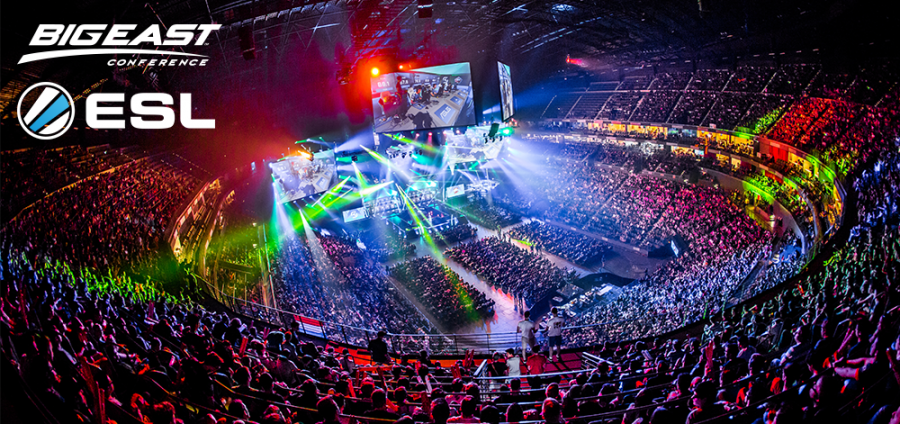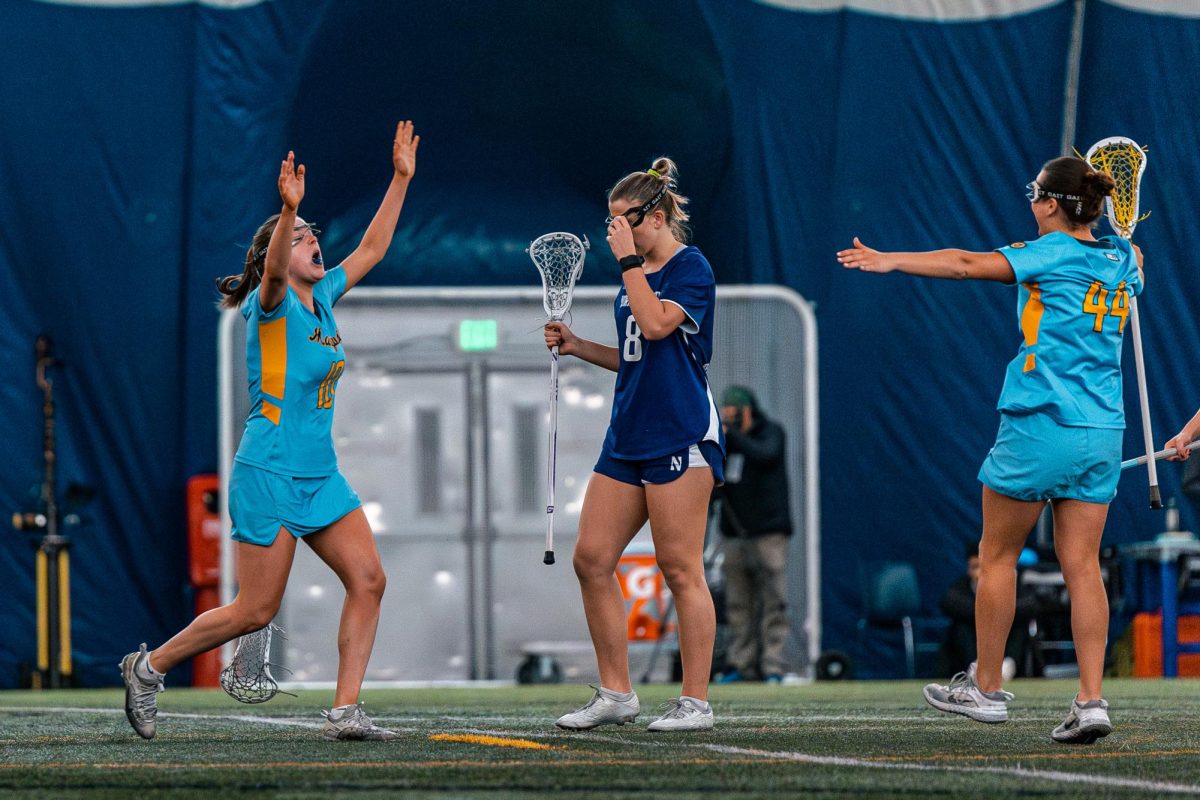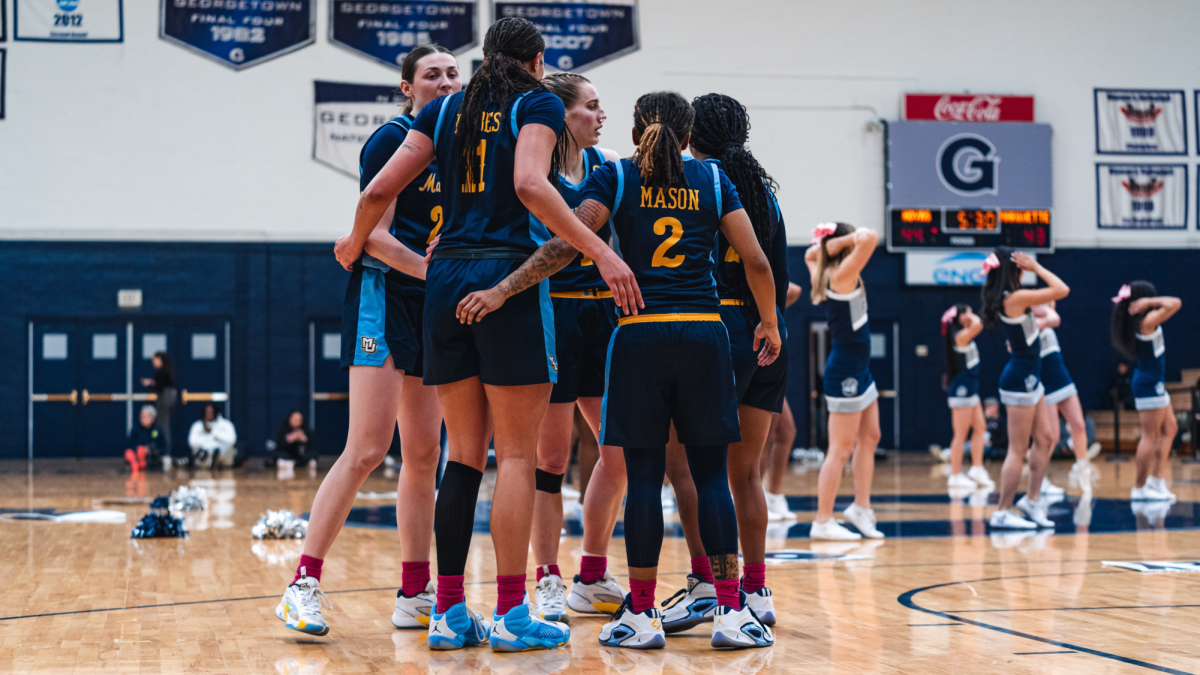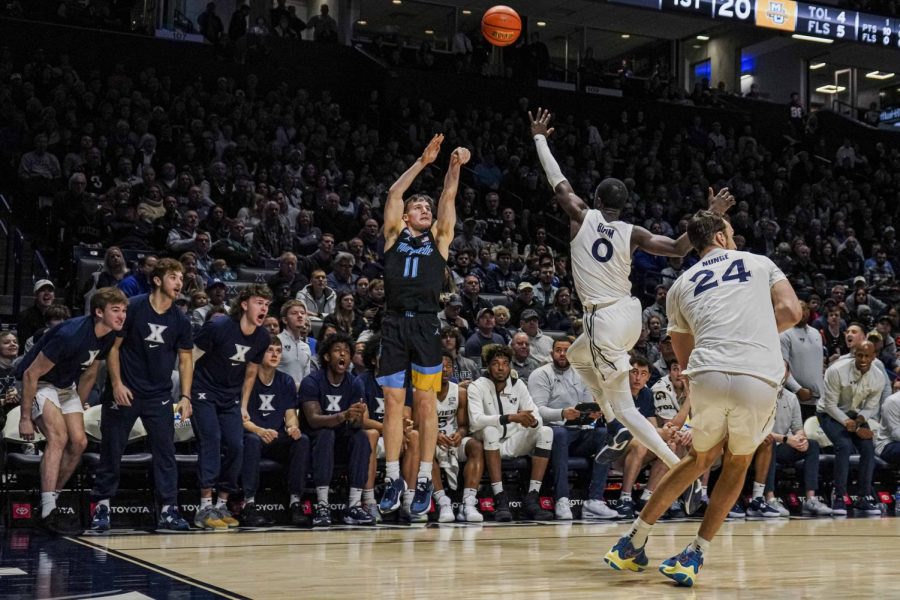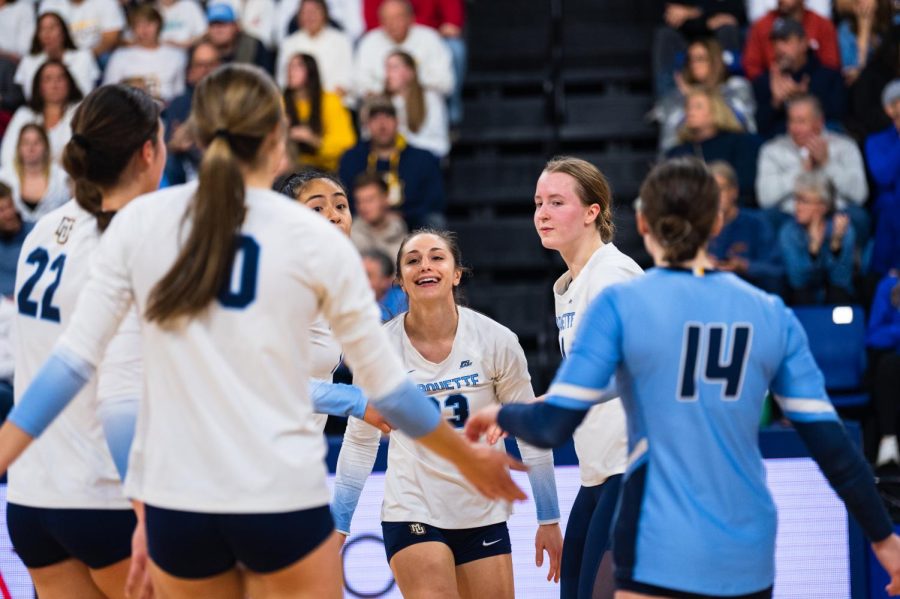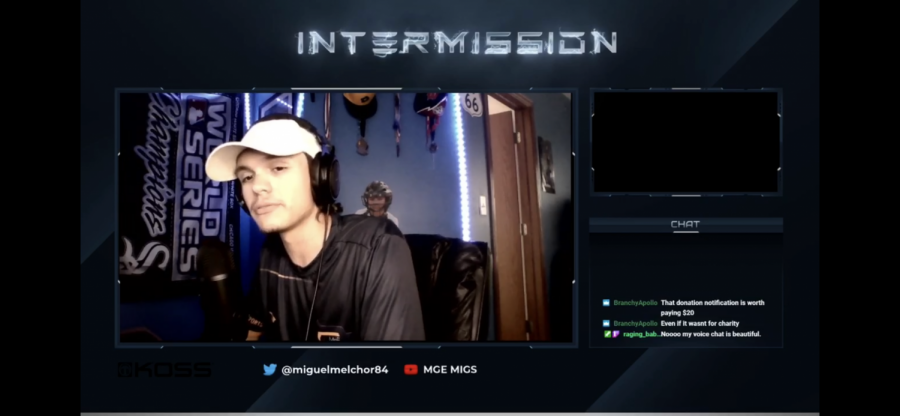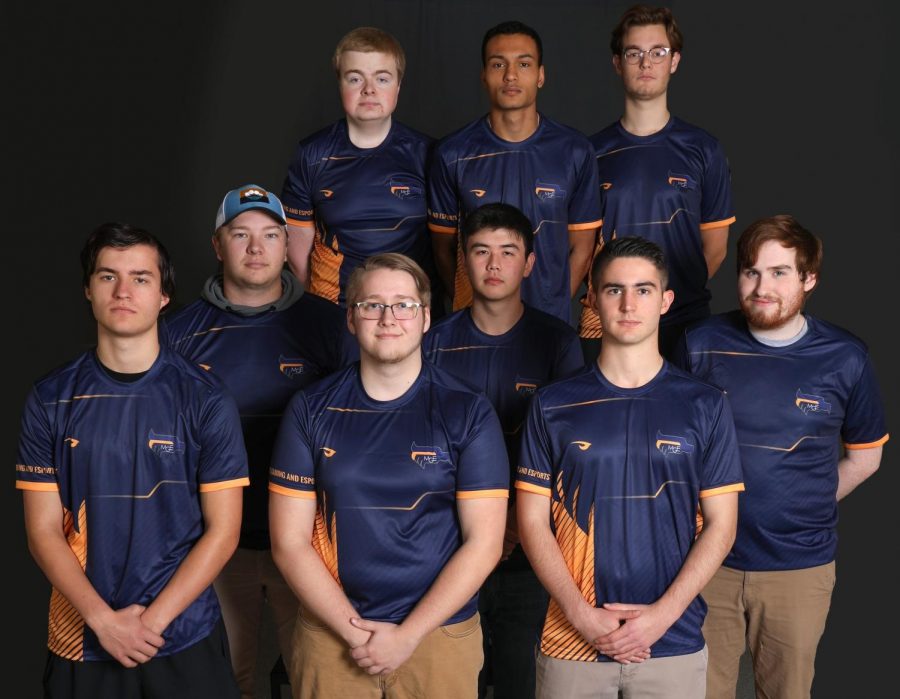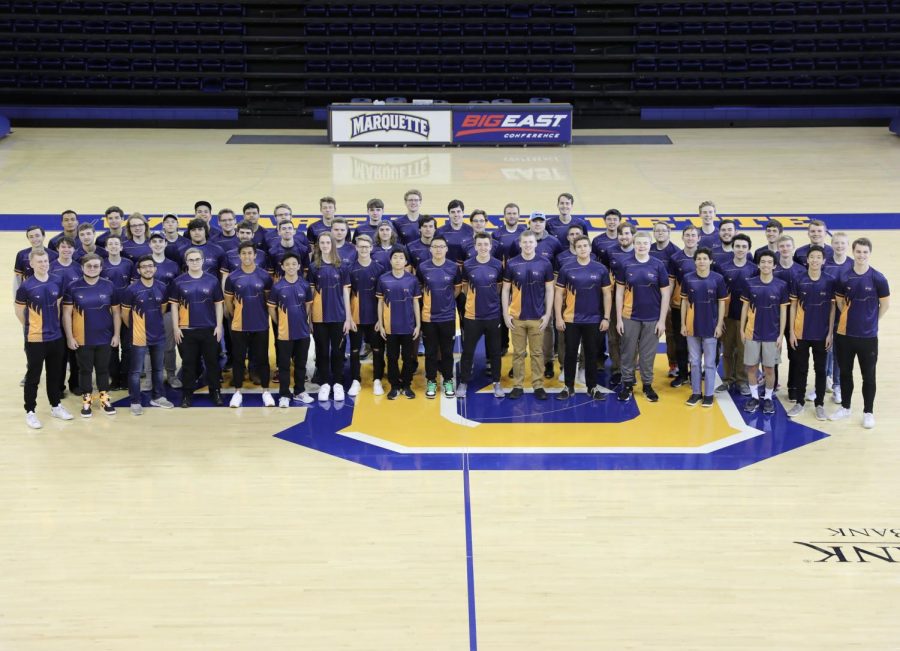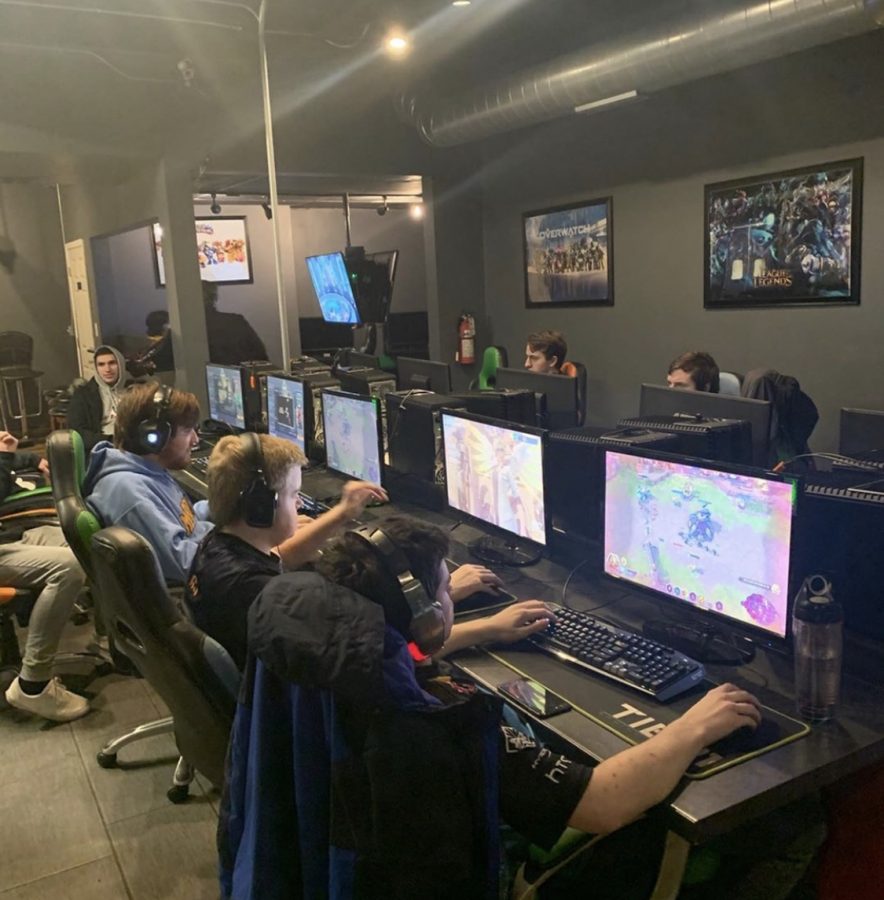Marquette’s newest competitive sport played its first games this weekend, and nobody seemed to notice.
It’s two esports: “Rocket League,” a sports video game best described as soccer with cars and “League of Legends,” the most popular multiplayer strategy game in the competitive scene. This is merely a pilot season that doesn’t come with scholarships yet.
But everything else is ostensibly the same as the Division I sports. There’s a season that started last weekend that involved representatives from seven of the BIG EAST’s 10 member schools, including Marquette. The Golden Eagles went 3-2 in Rocket League and will play in the conference semifinals next week, which will air on the BIG EAST’s Facebook and YouTube pages and video game streaming platform Twitch.
Yet with a week to go until the equivalent of the conference tournament, there’s very little evidence of the disciplined, methodical organization required to make something like this work.
In the search for this university’s newest sport, I’ve emailed members of Marquette’s Gaming and Esports Organization, a student group on campus that hosts video game tournaments. I’ve reached out twice to ESL, a global esports company that has partnered with the BIG EAST to administrate its pilot season. I even reached out to the Marquette athletic department.
Marquette’s athletic department responded immediately, with a representative telling me “nothing formal (has) been doled out in terms of responsibility or oversight” of esports.
Esports club president Patrick Glogovsky emailed back next and said that tournament participants and the conference handled all relevant information. Not even he knew the schedule or how the season would work. In fact, nobody did until the BIG EAST released details Friday night, just 15 hours before the first game. The date of the first game flatly contradicted the first press release, which stated that opening games were to be played on March 19.
When it was time for the preliminary round, only five of seven schools had their own streaming channels to broadcast games. Four of the five channels actually ended up showing the games, while Marquette’s remained dormant for the whole weekend.
Confused? Me too.
Logic would dictate one of the first things to do with the launch of any new sport is to make sure people know it exists. As someone who grew up playing a lot of video games and wouldn’t mind broadcasting a few esports events, I would spend more time looking for information than almost anyone else, and even I got tired of trying to chase it down. Odds are excellent that most other people would stop hunting after 30 seconds of not being able to find basic facts.
It may be tempting to just blow off esports as a niche interest, but that would ignore two essential truths: Competitive gaming is already massively popular, and it’s going to grow even bigger. A report from esports marketing company Newzoo placed total global esports revenues at $700 million in 2017, up from $325 million in 2015. The report projects total revenues to rise to $1.2 billion by 2020. For comparison’s sake, the NCAA, which governs intercollegiate athletics for over 1,200 member schools, made $1.1 billion from football, basketball and all its other sports in 2017, per its yearly financial disclosure statement.
Even for people not interested in video games or esports, this new sport has the potential to drastically alter the landscape of conventional collegiate athletics. A tournament of popular strategy game “Heroes of the Storm,” featuring 64 schools from around the country, coincided with basketball’s March Madness this year. The winners of the tournament were awarded $25,000 in tuition grants per year of college, essentially making them among the first competitive gamers to be given a scholarship for that purpose. The Big Ten Conference, which has partnered with Riot Gaming, already made the decision to extend a similar pilot esports league through 2019 with scholarships.
If the industry meets its projections, the early adopters of competitive gaming may someday enjoy advantages similar to what the University of Alabama gets from football, or what the University of Kentucky gets from basketball: name recognition, prestige, boatloads of free advertising and money falling out of the sky, year after year.
This is why a well-coordinated rollout is important. Ever since the March 13 announcement, the BIG EAST didn’t tweet about esports once until the night before the invitational. Even though March Madness obviously takes precedence, a quick, “Hey, don’t forget we exist,” post every now and again wouldn’t be out of line. A tab with easily accessible, non-contradictory information, much like the conference has for all its other sports, would probably help get more people excited as well.
Long-term, the BIG EAST and each member school will have to grapple with how to organize esports. It remains to be seen whether video games will fall under each athletic department’s umbrella or whether it’s different enough to warrant its own organizations. Revenue sharing and recruiting also aren’t going to be easy to figure out.
Before all that can be answered, though, the BIG EAST has to decide whether it’s serious about competitive gaming. Forty years ago, this conference organized itself into a basketball juggernaut the country had never seen before, with its member schools reaping handsome rewards for being part of the endeavor. That can be done again with esports. It’s just a matter of organization.

